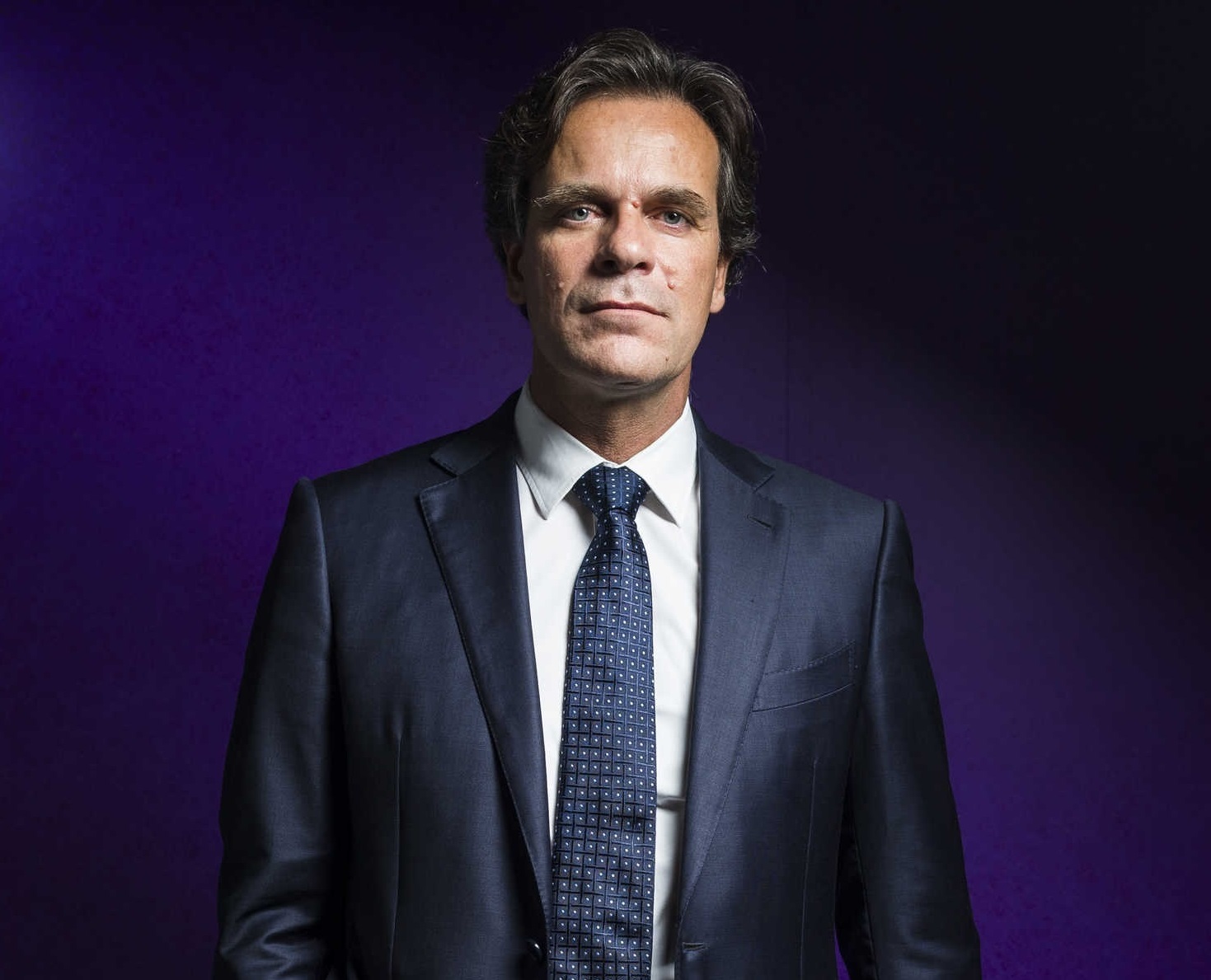E-Business
The Role of the Cloud in Your Digital Transformation Journey from SAP’s Perspective

Businesses acknowledge they are buried under mountains of inefficiencies and missed opportunities.
CEOs understand that digital is an opportunity or a threat. So,the question is not about awareness, but how to unleash the power of digital transformation while finding a balance between maintaining a healthy business and current infrastructure, and innovating without disruption.
The mandate from business to IT has shifted. For decades, a CIO’s chief responsibility was to reduce costs and keep the lights on just enough to run mission-critical processes. Now, CIOs and IT departments are tasked with driving business innovation. To stay competitive in a digital economy, it is no longer sufficient to have a system landscape whose primary role is to keep records.

SAP
Most organizations invest a great deal to maintain and customise their IT landscapes to meet their unique business needs.
Today, nearly every organisation has some level of cloud presence, typically for customer relationship management (CRM), human capital management (HCM), or procurement.
The question we hear most often from customers is not how to make their first foray into the cloud, but rather how to design a comprehensive enterprise cloud strategy that:
- Protects existing investments
- Accelerates innovation
- Keeps an organization’s unique business processes intact
Moving to the cloud does not mean breaking off some parts of the business in a piecemeal fashion or taking a rip-and-replace approach.
Cloud is one of the key drivers of digital transformation. Cloud has disrupted the traditional IT model by drastically reducing time to market and TCO for innovative solutions. With its ease of use and ubiquitous access, cloud has democratised the decisions about software purchasing, access, and usage.
Cloud computing offers immense opportunity for companies to improve their business operations, regardless of sector.
Modern cloud offerings reduce IT infrastructure complexity and free up resources that can be better applied to driving innovation.

And with security topping the list of concerns among business and IT leaders, cloud providers today invest talent and energy into ensuring their offerings are able to meet even the most stringent security requirements.
According to the IDC, cloud spending is expected to surge by 25% to reach more than $100bn, with cloud data centres expected to double in number.
In a separate study, analysts found that an astonishing $237bn in profits were lost by the top 200 global companies alone, mainly due to the hidden costs of complexity.
Despite these clear signs, cloud migration of key business applications is still met with reservations and, often, resistance.
IT leaders list concerns such as possible downtime, security, potential loss of control over key business processes, and cost.
Managing increasing complexity
As technologies like artificial intelligence, predictive analytics, AR, VR, and the Internet of Things become mainstream, enterprise IT systems and the digital processes they drive are getting more complex every day.
Companies need to find new ways to reduce complexity while ensuring that their IT systems are flexible enough to adapt to the requirements of a shifting technology and business landscape.
Many organizations choose to migrate some or all their mission critical applications to the cloud to increase flexibility.
To do this efficiently, it is critical to understand some of the key success factors for a cloud model. The high ground in any mission-critical application cloud solution comes down to four promises:
- A comprehensive, end-to-end SLA approach that avoids unproductive time-wasting by disparate service providers.
- Integration across your application landscape.
- Access to industry and engineering experts and best practices to support ad hoc and ongoing needs.
- Ability to leverage new skills and resources across infrastructure, technical management and cross vendor application management.
SAP’s cloud offerings provide companies with the global expertise and local knowledge needed to free up internal resources and shift focus away from IT management – i.e. ensuring systems are up and running – and to innovation, the driving force of all successful businesses in today’s digital economy. The benefits of this are clear:
The cost benefit of cloud
Running business applications in the cloud means less maintenance, especially in comparison to on-premise solutions, as many subscription models include company-specific maintenance and support in addition to hosting.
Investments to replace outdated hardware are also no longer necessary, as these are already included in the monthly fees and service agreements.
Using managed cloud services allows companies to scale the scope of applications they pay for to what they really need.
While existing on-premise solutions might have numerous functionalities that companies pay for (although they are often unnecessary), companies in the cloud only pay for what they really need and for what they use. When business requirements change, companies can flexibly adapt their services and applications in the cloud as required.
Unlocking business value
By partnering with a leading cloud provider such as SAP, companies can accelerate business processes that were previously limited by the performance of their on-premise systems.
In addition, they can swiftly replace outdated applications with new ones and make sure that different company locations with previously diverging software releases are all upgraded at the same time, reducing the overall complexity of their IT landscape.

Support is similarly simplified: by moving insulated business applications to the cloud, companies are able to work with a single provider that assumes total responsibility.
With a comprehensive, managed cloud offering such as the SAP HANA Enterprise Cloud, organisations can further optimise their IT landscape to future-proof their business.
This allows them to focus on the functional and business layer of their stack – driving innovation, business value, and growth – while handing off the technical aspects of system and application management to a reputable cloud partner such as SAP.
With 125 million cloud subscribers and 44 state-of-the-art data centres in 27 locations around the world, isn’t it time you spoke to SAP about how the cloud can fit into your company’s digital transformation journey?
E-Business
FG Plans to Link Social Register to NIN for Humanitarian Crisis

Federal government has disclosed that efforts are ongoing to link the National Social Register (NSR) to the National Identity Numbers (NIN).

Prof. Nentawe Yilwatda, minister of Humanitarian Affairs and Poverty Reduction, explained that the linked data would assist the country to anticipate crises, mobilize resources faster, and ensure aid reaches those who need it the most.
He said harnessing data would save the country and relevant stakeholders the stress and bottlenecks of outdated processes.
He also identified bureaucratic crisis as the biggest crisis in the humanitarian space which stalls responses to humanitarian issues.
Speaking in Abuja on Tuesday at the National Humanitarian Roundtable programme, the minister said: “People are traumatized by climate change, security threats and economic shock across the country and in the midst of these, we have limited funding.
“The biggest crisis we have is not just the people being killed, the crisis we have is a bureaucratic crisis that does not respond to a humanitarian crisis. Every delay in decision making, every inefficiency in coordination, every shortfall in funding, costs the life of people.
“They say knowledge is power, but knowledge can be destructive too. It can only be power if we use it effectively. By leveraging data and technology, we can anticipate crises; we can mobilize resources faster and ensure aid reaches those who are in need the most and without the bottleneck of outdated processes.
“We are linking the social register to national identity numbers and geotagging all homes of those who are vulnerable across the country so that if there’s any crisis, we don’t need to begin to walk around communities and taking names and asking the States Emergency Management Agency and the National Emergency Management Agency (NEMA) for data.
E-Business
Nigeria Tops as INTERPOL Arrested Over 300 Cybercriminals Across Africa

Kaspersky has recently contributed its threat intelligence data to an INTERPOL-led law enforcement action that aimed to disrupt cross-border criminal networks across the African region that cause significant harm to individuals and businesses.

With seven participating countries in Africa, operation Red Card resulted in the arrest of 306 individuals suspected of links to cybercrimes such as mobile banking, investment and messaging app scams, and seizure of 1,842 devices.
Conducted from November 2024 to February 2025, operation Red Card was delivered through INTERPOL’s African Joint Operation against Cybercrime (AFJOC) and brought together law enforcers from Benin, Côte d’Ivoire, Nigeria, Rwanda, South Africa, Togo and Zambia.
The operation conduct was preceded by a threat intelligence data exchange, which was enriched by INTERPOL and its private sector partners, including Kaspersky. Kaspersky has shared with the law enforcement agency the results of an analysis of samples of a malicious Android application that targeted users in African countries along with the data on related infrastructure.
Altogether, the cybercriminal cases uncovered by the Red Card participants have preyed on more than 5,000 people. Among operation highlights were:
Nigeria: Nigerian police arrested 130 people, including 113 foreign nationals, for their alleged involvement in cyber-enabled scams such as online casino and investment fraud. The suspects, who converted proceeds to digital assets to conceal their tracks, were recruited from different countries to run the illegal schemes in as many languages as possible.
Zambia: Officers apprehended 14 suspected members of a criminal syndicate that hacked into victims’ phones. The scam involved sending a message containing a malicious link which, when clicked, installed malware on the device.
This allowed hackers to take control of the messaging account, and ultimately the phone, giving them access to banking apps. The hackers were also able to use the victim’s messaging apps to share the malicious link within conversations and groups, enabling the scam to spread.
Rwanda: Rwandan authorities arrested 45 members of a criminal network for their involvement in social engineering scams that defrauded victims of over USD 305,000 in 2024 alone.
Their tactics included posing as telecommunications employees and claiming fake ‘jackpot’ wins to extract sensitive information and gain access to victims’ mobile banking accounts. Another method involved impersonating an injured family member to ask relatives for financial assistance towards hospital bills.
South Africa: Local authorities arrested 40 individuals and seized more than 1,000 SIM cards, along with 53 desktops and towers linked to a sophisticated SIM box fraud scheme. This setup, which reroutes international calls as local ones, is commonly used by criminals to carry out large-scale SMS phishing attacks.
Neal Jetton, INTERPOL’s Director of the Cybercrime Directorate, said: “The success of Operation Red Card demonstrates the power of international cooperation in combating cybercrime, which knows no borders and can have devastating effects on individuals and communities.
“The recovery of significant assets and devices, as well as the arrest of key suspects, sends a strong message to cybercriminals that their activities will not go unpunished.”
“Kaspersky is proud to be part of this collaborative effort led by INTERPOL. The evolving threat landscape in Africa requires a multi-stakeholder dialogue and joint efforts of public and private organisations to address the cybersecurity challenges the region faces today.
The Red Card operation is a notable example of such cooperation, showcasing how the expertise of private companies coupled with extensive investigative capacities of law enforcers can foster a more cyber-resilient environment,” comments Yuliya Shlychkova, Vice President, Global Public Affairs, Kaspersky.
Kaspersky and INTERPOL have a vast record of joint operations aimed at combating cybercrime in the African region, with Kaspersky having supported two editions of INTERPOL’s Africa Cyber Surge operations.
Just recently, Kaspersky was also a contributor to INTERPOL’s joint action with AFRIPOL, which last year became the company’s official partner in fostering a more cybersafe climate across Africa. This partnership focuses on sharing Kaspersky’s extensive data on local cyberthreats and cybercrime trends in the region.
E-Business
Five WhatsApp Business Features Every Small Business Should Be Using


WhatsApp continues to be the best way for people and businesses to get business done in Nigeria. With its efficient features, the WhatsApp Business App has become an indispensable tool for small businesses, helping them streamline communication, enhance customer engagement and drive sales. And we know customers love communicating with businesses over WhatsApp too, as nearly 80% of people globally message with a business at least once a week.
Whether you’re just starting out or looking to optimise your business operations, here are five essential WhatsApp Business features that can elevate your efficiency and customer interactions.
1. Catalog – Showcase Your Products and Services
Gone are the days of sending multiple images and descriptions individually to customers. With the Catalog feature, you can create a digital storefront where customers can browse your offerings within WhatsApp. This is just like a mini-website which makes it easier to showcase your products, prices and descriptions in an organised way.
How to Use It: Go to Business Tools > Catalog. Add product images, videos, names, descriptions and pricing.
2. Quick Replies – Save Time on Repetitive Questions
Answering the same customer questions repeatedly? Quick Replies let you create preset responses for frequently asked questions, saving you time and ensuring fast customer service.
How to Use It:Go to Settings > Business Tools > Quick Replies. Create and save responses such as a greeting message or order confirmation. Use the shortcut “/” to insert a quick reply in any chat
3. Labels – Stay Organised and Track Conversations
Managing multiple customer interactions can be overwhelming, but the Labels feature helps by categorising chats in different ways, such as order status or customer type. You can create labels with different colors or names and add the conversations to an entire chat. This keeps your inbox organised and ensures no customer is left waiting.
How to Use It: Open a chat, tap on the three-dot menu > Label Chat. Assign relevant labels like New Customer, Order Placed, Pending Payment.
4. Away Messages – Engage Customers Even When You’re Away
Never miss a customer inquiry again. Away Messages allow you to set up a greeting or away message, ensuring customers receive timely responses even outside business hours.
How to Use It: Go to Business Tools > Away Message / Greeting Message. Set up a custom message and schedule when it should be sent.
5. Meta Verified – For Enhanced Protection and Account Support
A paid subscription that helps your business build credibility with new audiences, Meta Verified can help drive more engagement and grow your brand. With Meta Verified, you’ll receive enhanced account support, can use WhatsApp across multiple devices and easily create a professional WhatsApp web page that’s tailored to you.
How to Use It: Go to Settings or Business Tools > tap Meta Verified.
WhatsApp Business is packed with features designed to help small businesses grow, stay organised, and engage with customers effortlessly. By leveraging these features, you can enhance your customer experience, increase efficiency and ultimately drive more sales. Start your own journey with the WhatsApp Business app here.

 Broadcasting3 days ago
Broadcasting3 days agoNGO Blasts MultiChoice for Tariff Hike in Nigeria, Slash in South Africa

 News3 days ago
News3 days agoNIPOST Explains Clamping Down on Illegal Logistics Services in Enugu

 E-Business3 days ago
E-Business3 days agoOtti, Abia State Gov Promises Internet Access for all Abia Communities in 9 Months

 News3 days ago
News3 days agoNESREA Urges Nigerians to Dispose Batteries Properly to Avoid Hazards

 Telecom3 days ago
Telecom3 days agoTelcos Mull Introduction of Different Tariff Plans for Different States

 E-Financial3 days ago
E-Financial3 days agoCITN Seeks AI to Curb Revenue Leakage in Nigeria’s Tax System

 News3 days ago
News3 days agoTony Elumelu Foundation Grants $15m to 3,000 African Entrepreneurs

 News2 days ago
News2 days agoPolice Arrest 4 Bank Staff over Alleged ₦270m Fraud, Money Laundering
























